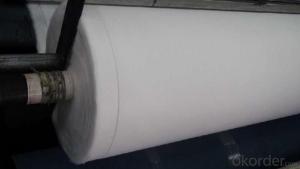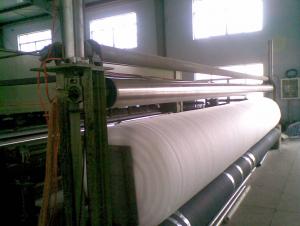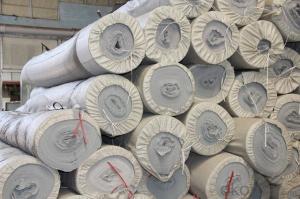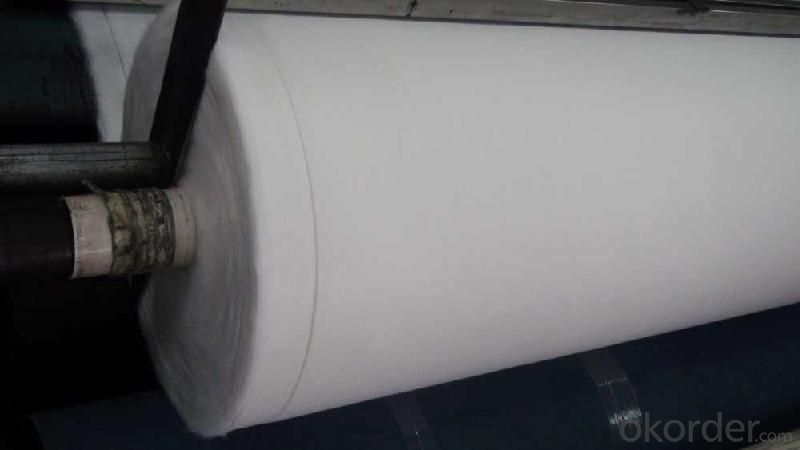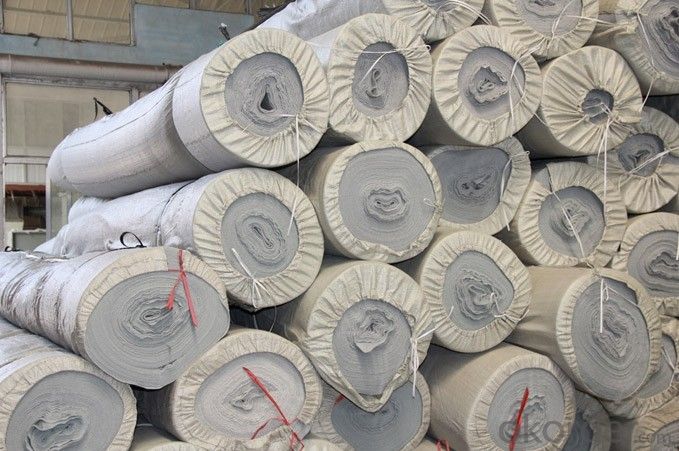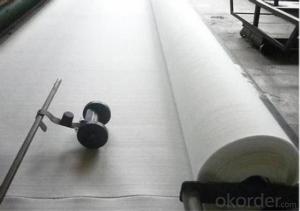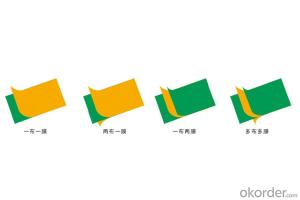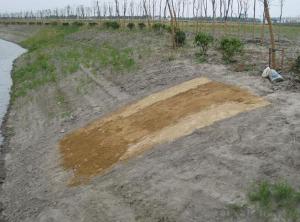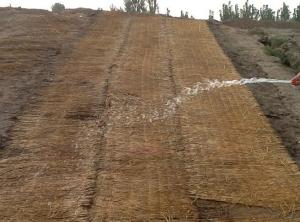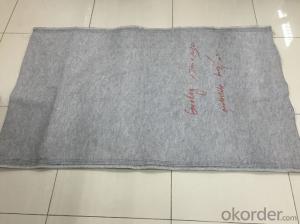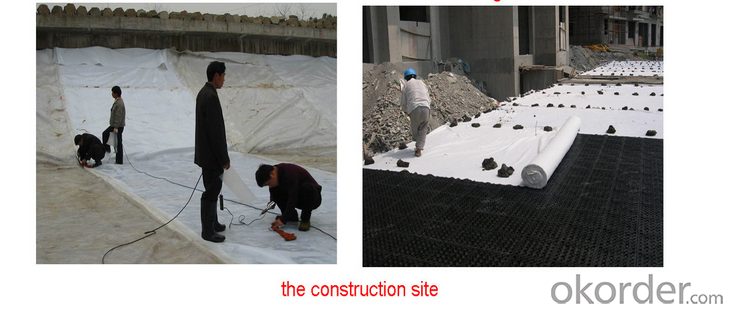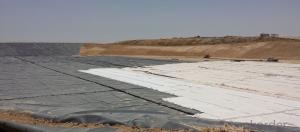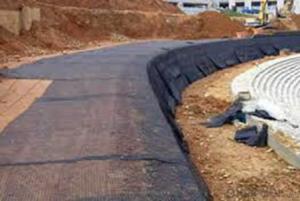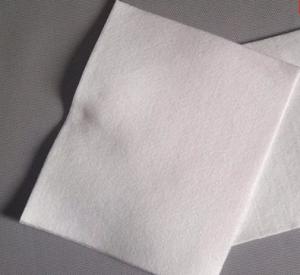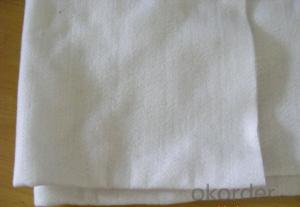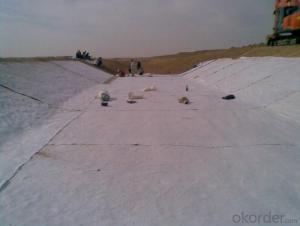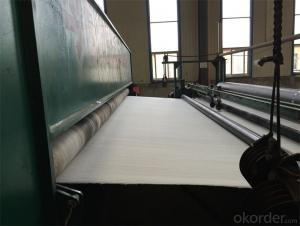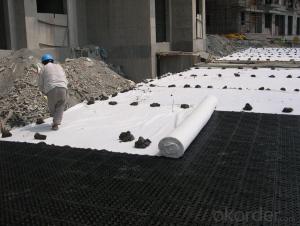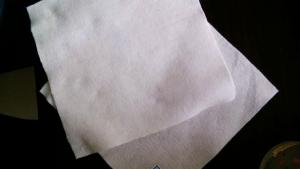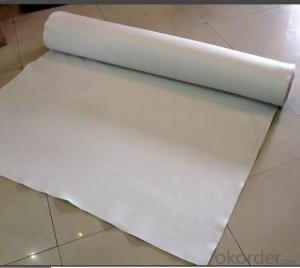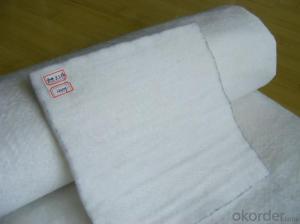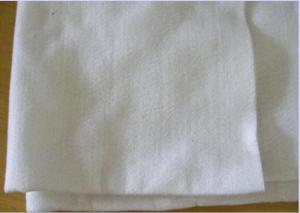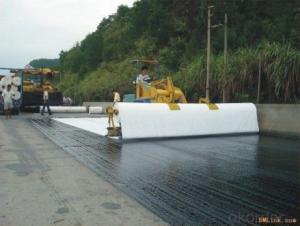Geotextile Agriculture Pet Short Fiber Needle Punched Non Woven Geotextile
- Loading Port:
- Tianjin
- Payment Terms:
- TT OR LC
- Min Order Qty:
- 1000 g/m²
- Supply Capability:
- 100000 g/m²/month
OKorder Service Pledge
OKorder Financial Service
You Might Also Like
Packaging & Delivery
| Packaging Detail: | Generally packing into roll in PP woven bag or as customers' request. |
| Delivery Detail: | Within 7 days, urgent need urgently deliver |
Specifications
1.Factory directly supply
2.ISO9001/ 14001
3.Material:PP/PET;Weight:100g-1500g/m2 ;Roll width:1m-8m/roll
4.Sample DHL sent
Factory supply geotextiles, all types of geosynthetics
1.Advantage and function
Good flexibility,permeability,filtration,separation and easy for construction
1) Filtration
The filtration layer of the dykes, river canal, seacoast, concrete slope, retaining walls. At the same time of preventing the clay granule from passing, it allows the water and the gas pass through freely.
2 )Separation:
The isolation of the railway dregs and the roadbed, roadbed and the soft base, surface of the airdrome and parking lot and the groundsill, different dam materials. It isolates the soil and the gravel of two kinds different granule pathway from the groundsill or other buildings.
3) Adding muscle:
The highway, railway, soil-stone dam, breakwater, airport, backfill soil of retaining wall, slope protection, etc in which distributes the earth stress, prevents the side-displacement of the earth body and improves the earth body stability.
4 )Protection
It prevents the dam from being washed out, protects the dam and the bottom, prevents the water and soil from being washed away.
2.Usage:
Used in the area of highway,railway,dam,reclamation etc.for filtration separation drainage and protection.
3.Size of package
Width is 1-8m,length is 50-100m,or pack as client request
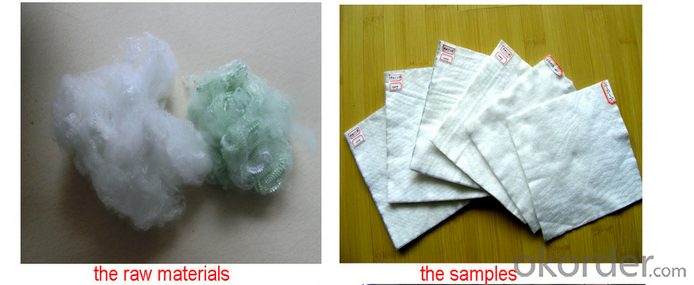
2.Specifications
1) Weight / Mass: 100g/m2-1500g/m2
2) Width: Within 8 m (1m-8m)
3) Length: 50m-100m/roll (as request)
4) Material: PP / PET
5) Color: Black , white , grey and other color
6) Certificate: CE/ISO9001 , ISO14001
7) Manufacturing method: nonwoven / woven
8) The Biggest geotextile manufacturer/factory in China for many years
| PET continuous filament spunbond needle punched nonwoven geotextile(representative average data.) | |||||||||
| Test Item/Unit/No. | HY100 | HY150 | HY200 | HY250 | HY300 | Test Method | |||
| Mechanical Properties | |||||||||
| Tensile Strength | CD | kn/m | 4.8 | 8.3 | 10.9 | 14.5 | 18 | ASTM D 4595 | |
| MD | 7 | 12 | 14 | 18 | 22 | ||||
| Elongation at maximum load | CD | % | 65 | 64 | 63 | 62 | 61 | ||
| MD | 64 | 63 | 62 | 61 | 60 | ||||
| Grab Strength | CD | kn ≥ | 0.36 | 0.58 | 0.87 | 1.08 | 1.35 | ASTM D 4632 | |
| MD | 0.42 | 0.78 | 1.07 | 1.33 | 1.6 | ||||
| Grab Elongation | CD | % | 55 | 55 | 59 | 59 | 60 | ||
| MD | 50 | 50 | 51 | 51 | 53 | ||||
| Trapezoidal Tear | CD | kn ≥ | 0.16 | 0.23 | 0.31 | 0.39 | 0.46 | ASTM D 4533 | |
| MD | 0.245 | 0.31 | 0.42 | 0.46 | 0.55 | ||||
| Burst Strength-CBR plunger method | kn ≥ | 0.85 | 1.47 | 2.3 | 2.8 | 3.3 | ASTM D 6241 | ||
| Puncture resistance | n ≥ | 220 | 320 | 430 | 540 | 650 | ASTM D 4833 | ||
| Mullen Burst | Mpa | 1.2 | 1.8 | 2.3 | 2.8 | 3.3 | ASTM D 3786 | ||
| Cone drop resistance(hole-Φ)Dynamic perforation diameter | mm | 34 | 30 | 26 | 22 | 19 | BS EN 918-1996 | ||
| Hydraulic Properties | |||||||||
| Flow Rate,Q100 | L/s/m² | 200 | 210 | 180 | 150 | 140 | ASTM D 4491 | ||
| Permeability | cm/s | 0.48 | 0.43 | 0.39 | 0.36 | 0.34 | |||
| Apparent Opening Size O95 | mm ≤ | 0.13 | 0.12 | 0.12 | 0.11 | 0.11 | ASTM D 4751 | ||
| Apparent Opening Size O90 | mm ≤ | 0.12 | 0.11 | 0.11 | 0.1 | 0.1 | |||
| Physical Identification Properties | |||||||||
| Thickness 2KPa | mm | 1.1 | 1.3 | 1.8 | 2.5 | 2.9 | ASTM D 5199 | ||
| Mass per unit area | g/m² | 100 | 150 | 200 | 250 | 300 | ASTM D 5261 | ||
| Width | m | 2/3/6/ | 2/3/6/ | 2/3/6/ | 2/3/6/ | 2/3/6/ | |||
3. Features
1) Staple fibers needle punched non woven geotextile
The geotextile is made of polypropylene staple fibers on cross-laying equipment and needle punched equipment. It owns the advantages of acid and alkali resistance, erosion resistance, aging resistance, large strength, stable size, good filtrability etc.
2) Filament non woven geotextile
Filament geotextile has features as follows: High strength, good capacity of elongation and high biology tolerance, alkali tolerance, acidity tolerance, weather resistance good filtration and fine drainage capacity etc. Also it is of low cost, easy in construction and use effects.
4.Applications
1) Filtration :
The filtration layer of the dykes, river canal, seacoast, concrete slope, retaining walls. At the same time of preventing the clay granule from passing, it allows the water and the gas pass through freely.
2) Separation :
The isolation of the railway dregs and the roadbed, roadbed and the soft base, surface of the airdrome and parking lot and the groundsill, different dam materials. It isolates the soil and the gravel of two kinds different granule pathway from the groundsill or other buildings.
3) Adding muscle :
The highway, railway, soil-stone dam, breakwater, airport, backfill soil of retaining wall, slope protection, etc in which distributes the earth stress, prevents the side-displacement of the earth body and improves the earth body stability.
4) Protection :
It prevents the bank from being washed out, protects the bank and the bottom, prevents the water and soil from being washed away.
FAQ:
♦ Payment terms: by T/T or L/C |
♦ MOQ:2000 SQM |
♦ If you are interested in our products ,pls advice me the technical index,product weight etc,the more information the better..... |
- Q: Geotextile, geomembrane to go to the laboratory test
- Yes, there is a corresponding national standard I am specializing in the production of geotextile materials
- Q: Geotextile thinnest how many grams
- 80-100g, I am specializing in the production of geotextile geomembrane, wish smooth
- Q: Why lay the geotextile cloth after the gravel cushion
- To prevent the upper and lower gravel, soil and concrete mixed between.
- Q: How do geotextiles help in preventing soil contamination?
- Geotextiles help in preventing soil contamination by acting as a barrier that prevents pollutants and contaminants from infiltrating into the soil. They are designed to have high permeability, allowing water to pass through while trapping sediments and pollutants. This helps in reducing the risk of contaminant migration, protecting the underlying soil and groundwater from pollution. Additionally, geotextiles also enhance soil stability and drainage, further minimizing the potential for soil contamination.
- Q: Are geotextiles resistant to hydrocarbons?
- Yes, geotextiles are generally resistant to hydrocarbons.
- Q: How do geotextiles contribute to the safety of transportation infrastructure?
- Geotextiles contribute to the safety of transportation infrastructure by providing reinforcement, filtration, and separation functions. They help in stabilizing the soil, preventing erosion, and reducing the risk of settlement or failure of the roads, embankments, and retaining walls. Geotextiles also enhance the drainage system, allowing water to flow through while preventing the accumulation of excess moisture, which can weaken the structure. Overall, geotextiles play a crucial role in improving the durability, stability, and longevity of transportation infrastructure, ensuring safer and more reliable roadways.
- Q: What are the different geotextile testing parameters?
- Some different geotextile testing parameters include tensile strength, puncture resistance, burst strength, permittivity, apparent opening size, and UV resistance.
- Q: What are the installation techniques for geotextiles?
- There are several installation techniques for geotextiles, depending on the specific application and requirements. Some common techniques include trenching, anchoring, and overlaying. Trenching involves excavating a trench and placing the geotextile in the desired location, then backfilling the trench with soil or aggregate. Anchoring involves securing the geotextile to the ground using stakes or anchors, providing stability and preventing movement. Overlaying involves placing the geotextile on top of an existing surface, such as a road or landfill, to provide reinforcement and separation. The choice of installation technique depends on factors such as soil conditions, project specifications, and desired results.
- Q: Where to find the right geotextile
- Geotextile types are many, according to the manufacturing process of spinning, woven, woven, according to the material is divided into filaments, short wire and so on, if the most suitable geotextile should be the project requirements are not very strict , Generally like building coverage, road maintenance, etc., like this price is generally around 0.5 angle
- Q: How are geotextiles used in drainage systems?
- Geotextiles are commonly used in drainage systems to enhance their efficiency and longevity. These synthetic fabrics are placed in various parts of the system, such as around pipes or in trenches, to act as a filter and separator. By preventing the clogging of soil particles, geotextiles allow water to flow through while preventing the passage of fine particles. This helps maintain the system's hydraulic capacity and prevents blockages, ultimately improving the overall performance of the drainage system.
Send your message to us
Geotextile Agriculture Pet Short Fiber Needle Punched Non Woven Geotextile
- Loading Port:
- Tianjin
- Payment Terms:
- TT OR LC
- Min Order Qty:
- 1000 g/m²
- Supply Capability:
- 100000 g/m²/month
OKorder Service Pledge
OKorder Financial Service
Similar products
Hot products
Hot Searches
Related keywords
